Silco RTV 4500 silicon
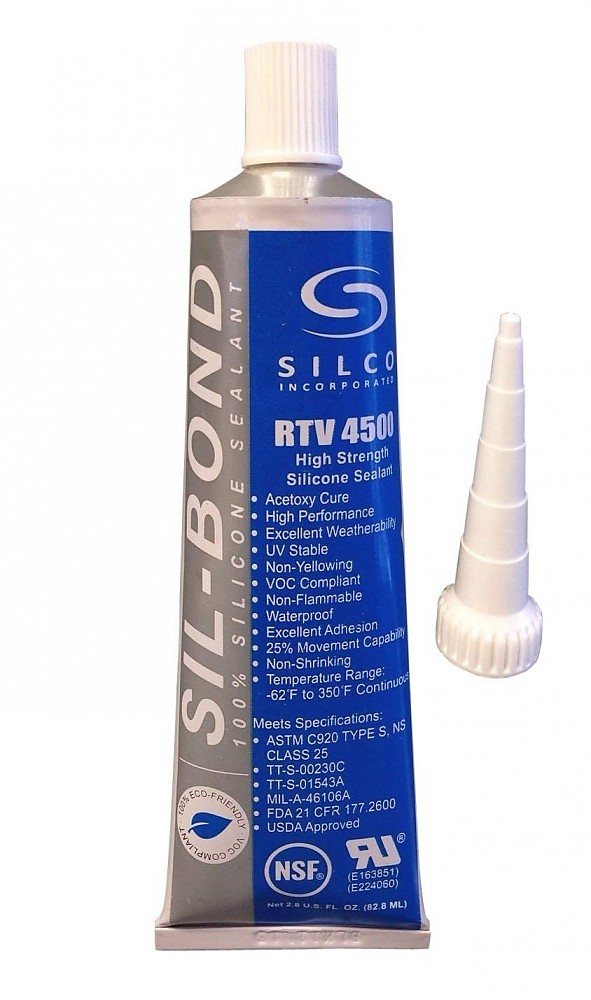
RTV (Room Temperature Vulcanizing) VOC (Volatile Organic Compound - compliant) silicone has so many uses that this is in fact as much a review as it is a tip for repairing outdoor equipment, and especially cooking hardware.
Pros
- Food-grade safe
- Ultra resistant
- Easy to use
- Cheap
- Long-lasting
- Comes in clean and other colors
Cons
- None that I can think of
Recently I (inadvertently) damaged my Sea To Summit 1.4L X-Pot while cooking breakfast during a camping trip. The X-Pot is a collapsible cooking pot that has a hard anodized aluminum base combined with food-grade, heat-resistant silicone walls that comes in various capacities and sizes.
It’s nothing revolutionary but a pretty neat and practical piece of gear that has even won some design awards out there. It works to reduce bulk and weight while keeping efficacy and practicality for backpacking and camping.
I use mine to cook everything (just not to boil water), usually with my Trangia-style spirit or any of my Esbit solid fuel stoves. It can’t be used with electrical heaters/cookers nor put on the fire with the silicone walls collapsed, which is exactly what I did this day (what a schmuck, I know).
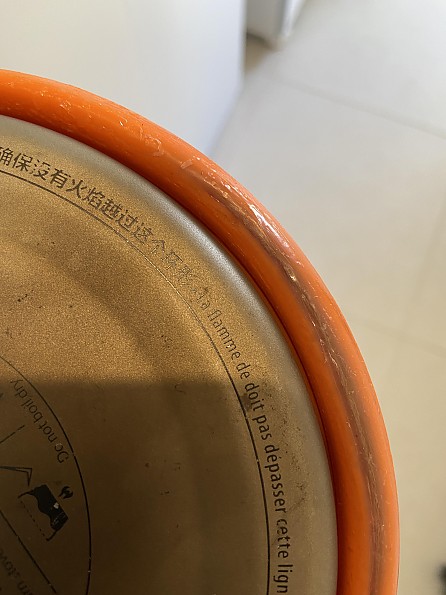
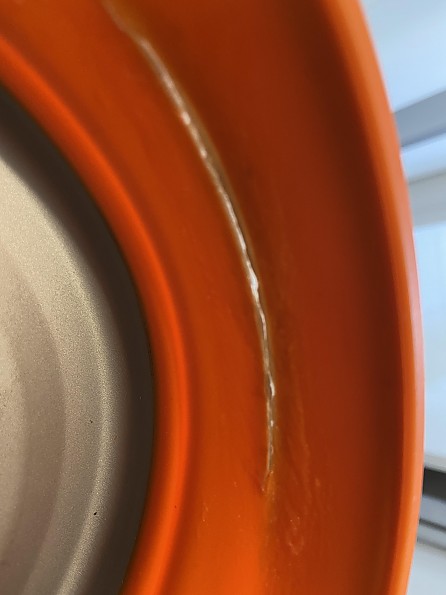
I noticed in time to take it out and correct before the whole thing caught fire. But still the crease on the top folding ring got damaged on both sides of the handles. One of them burned through, which in practice rendered the pot almost useless.
Enter silicone to the rescue.
Besides liking and using my X-Pot quite a lot, the thing isn’t cheap (as most of S2S gear, BTW). Thus, I wasn’t the least bit keen on throwing it out (or recycling it into something else) and replacing it with a new one, so I set out to find if I could fix it.
It had to be durable, reliable, flexible, resistant, and also food-safe (obviously) fix. I remembered having this little tube of RTV/VOC silicone around, and did some research on it. The thing has all those characteristics and adheres very well to silicone, so I gave it a try.
RTV/VOC silicone is heat and weather resistant, waterproof, non-flammable, non-shrinking and can stand temperatures from -62°F up to 350°F, which covers 100% of the intended use. I’ll never go even near those limits, so being VOC-compliant and food-grade safe was really what was I looking for. If this thing could fill and stick to my X-Pot walls, I’d be set.
First I used sandpaper to give some light roughness to the silicone walls around the damaged area, then cleaned thoroughly with acetone. Then I applied the RTV in thin coats to both the cracked side and the other one which got just darkened (but probably weakened too). A bit of a smoothing with the finger and let it dry (unfolded).
Results.
Curing happens at room temperature in a few hours. I let it sit for a couple of days, then a few more with the walls collapsed, before trying it out. First at home (a couple of times), then I felt safe to take it for a trip.
The results can be seen in the images. It’s not cosmetically perfect (far from it), but function and integrity have been 100% restored, which is what I wanted. It’s not leaking anymore, it can be folded fine, it won’t catch fire unless I use it again folded.
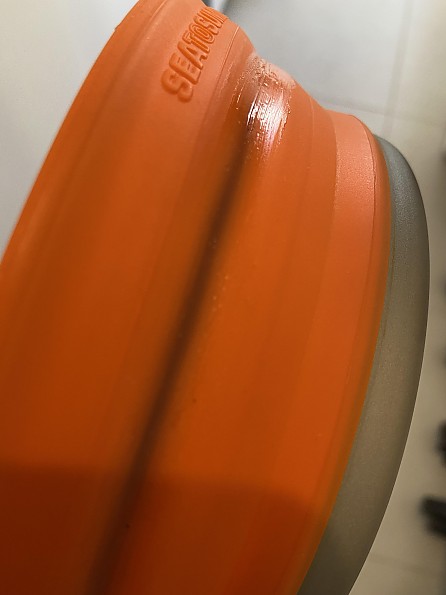
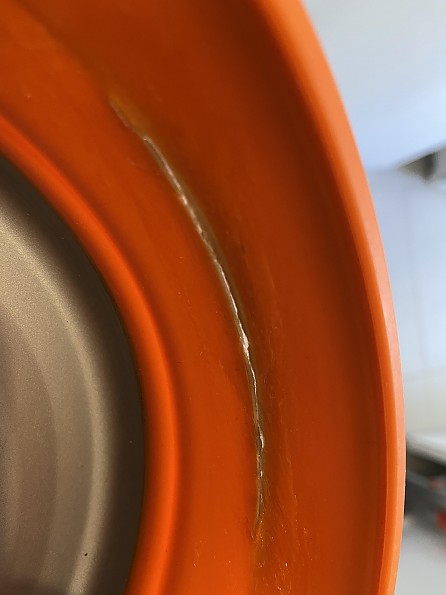
The RTV really bonds to the silicone and flexes with it. I have the sensation that it has almost become part of it, though of course it’s not integral nor chemically part of the original silicone, maybe chemically bonded at some level.
After a few dozen usages it‘s still holding, and looks like new. If it ever comes out I’m confident I can clean it and reapply for further series of use.
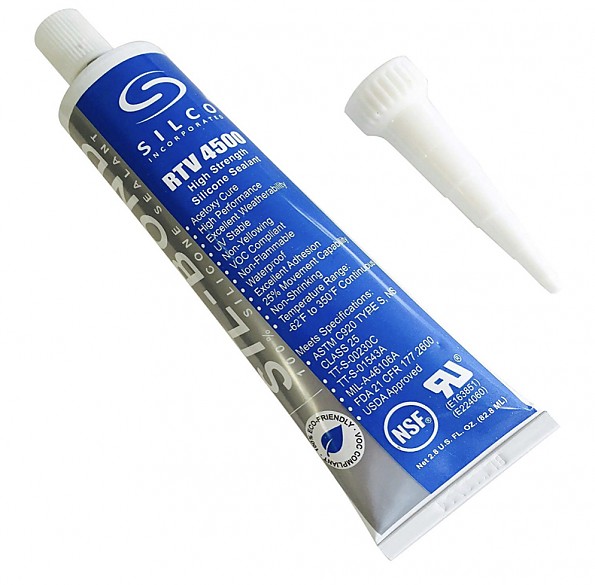
There are other brands and you can check out for FDA, USDA, ASTM compliance and specifications before closing and using, if safety really concerns you. I’m OK using it and so far I’m alive and well so I guess it’s safe.
Background
I like to tinker and toy with equipment, both as a way to improve or repair gear, as I said in my book about emergency and EDC kit building. I think this is much a part of outdoor lifestyle as everything else. This kind of silicone has many qualities and it so safe and cheap that makes it useful for all sorts of use: gluing, repairing, gaskets and sealants, etc.
Source: bought it new
Price Paid: USD8 for a 2.8fl.oz tube
Your Review
Where to Buy
You May Like
Specs
| Price |
Historic Range: $6.19 |

